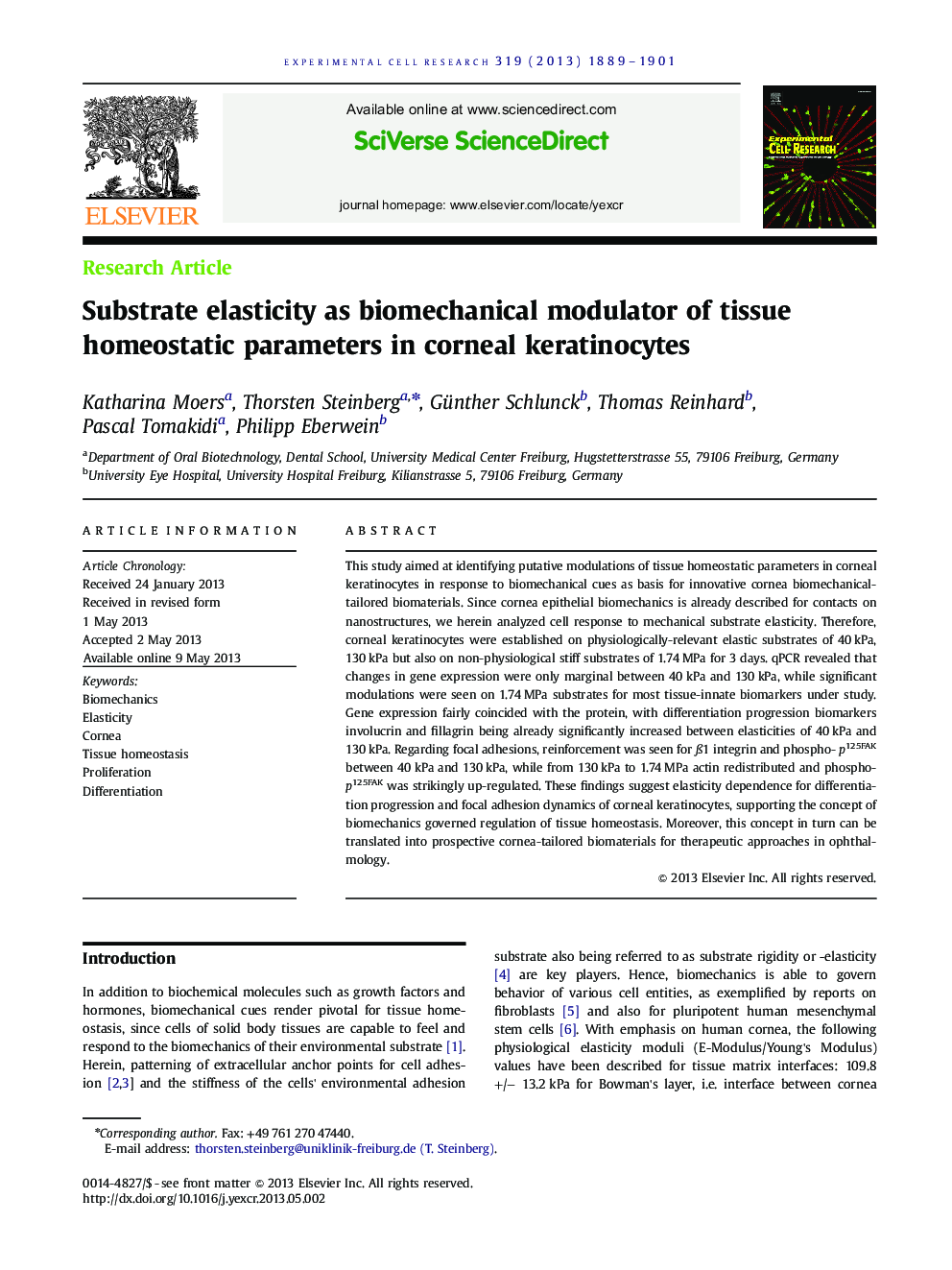| Article ID | Journal | Published Year | Pages | File Type |
|---|---|---|---|---|
| 10904259 | Experimental Cell Research | 2013 | 13 Pages |
Abstract
This study aimed at identifying putative modulations of tissue homeostatic parameters in corneal keratinocytes in response to biomechanical cues as basis for innovative cornea biomechanical-tailored biomaterials. Since cornea epithelial biomechanics is already described for contacts on nanostructures, we herein analyzed cell response to mechanical substrate elasticity. Therefore, corneal keratinocytes were established on physiologically-relevant elastic substrates of 40Â kPa, 130Â kPa but also on non-physiological stiff substrates of 1.74Â MPa for 3 days. qPCR revealed that changes in gene expression were only marginal between 40Â kPa and 130Â kPa, while significant modulations were seen on 1.74Â MPa substrates for most tissue-innate biomarkers under study. Gene expression fairly coincided with the protein, with differentiation progression biomarkers involucrin and fillagrin being already significantly increased between elasticities of 40Â kPa and 130Â kPa. Regarding focal adhesions, reinforcement was seen for Ã1 integrin and phospho- p125FAK between 40Â kPa and 130Â kPa, while from 130Â kPa to 1.74Â MPa actin redistributed and phospho-p125FAK was strikingly up-regulated. These findings suggest elasticity dependence for differentiation progression and focal adhesion dynamics of corneal keratinocytes, supporting the concept of biomechanics governed regulation of tissue homeostasis. Moreover, this concept in turn can be translated into prospective cornea-tailored biomaterials for therapeutic approaches in ophthalmology.
Related Topics
Life Sciences
Biochemistry, Genetics and Molecular Biology
Cancer Research
Authors
Katharina Moers, Thorsten Steinberg, Günther Schlunck, Thomas Reinhard, Pascal Tomakidi, Philipp Eberwein,
